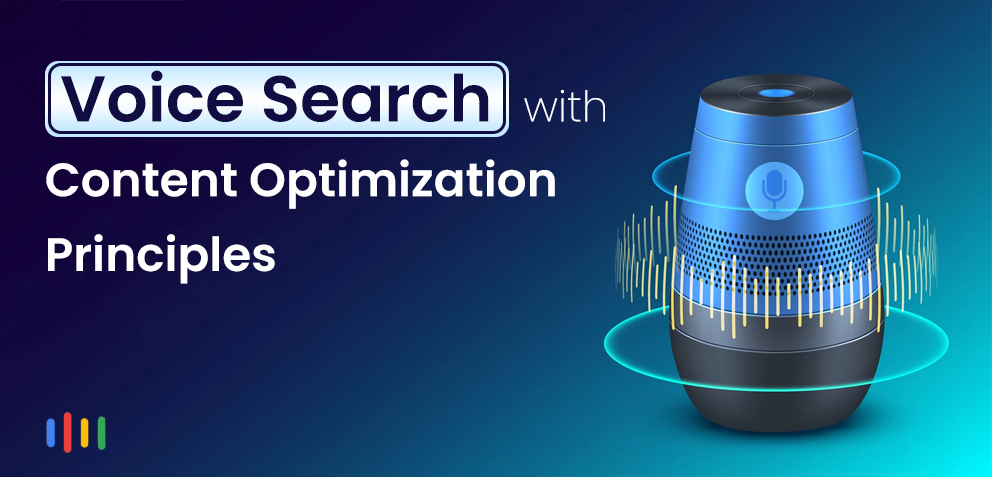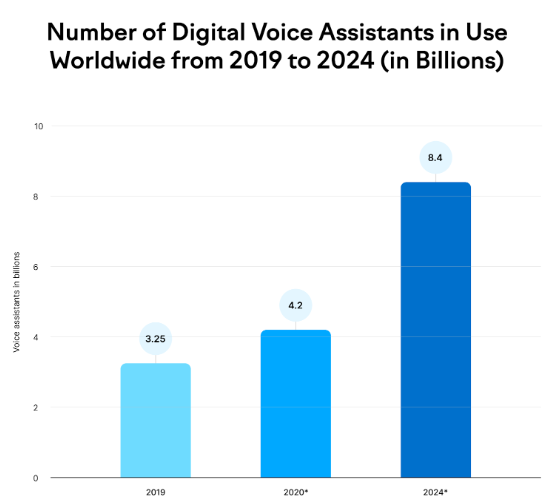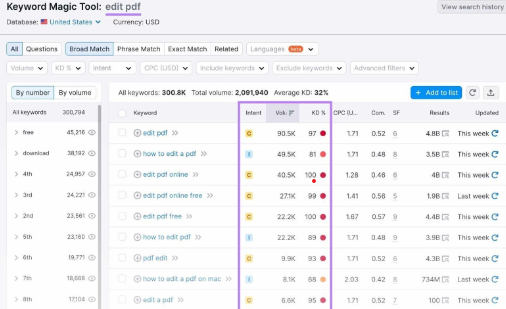Content Optimization Best Practices for Improved Voice Search

Table Of Contents
 Stay In-the-loop
Stay In-the-loop
Get fresh tech & marketing insights delivered right to your inbox.
Share this Article
Tags
Category
- .Net Developer
- Adtech
- Android App Development
- API
- App Store
- Artificial Intelligence
- Blockchain Development
- Chatbot Development
- CMS Development
- Cybersecurity
- Data Security
- Dedicated Developers
- Digital Marketing
- Ecommerce Development
- Edtech
- Fintech
- Flutter app development
- Full Stack Development
- Healthcare Tech
- Hybrid App Development
- iOS App Development
- IT Project Management
- JavaScript development
- Laravel Development
- Magento Development
- MEAN Stack Developer
- MERN Stack Developer
- Mobile App
- Mobile App Development
- Nodejs Development
- Progressive Web Application
- python development
- QA and testing
- Quality Engineering
- React Native
- SaaS
- SEO
- Shopify Development
- Software Development
- Software Outsourcing
- Staff Augmentation
- UI/UX Development
- Web analytics tools
- Wordpress Development
Did you know that over 50% of adults prefer voice search these days? Thanks to continuously evolving voice assistants, speech recognition, and AI technology, these numbers are likely to increase in the coming years. So, what does it mean? It simply focuses on prioritizing content optimization for smooth and quick voice search. This helps you to reach your targeted and potential audiences who use voice search to find any information.
Our blog brings to the table some essentials about voice search and the tips or principles of content optimization that can give you an enhanced voice search facility. So, let’s start!
Voice Search – A Brief Overview
Before we discuss tips and tricks for optimizing your content for voice search, let’s learn what voice search means and how it works. Voice search is nothing but a process that enhances your online visibility for voice search queries. And the prime object of voice search is to get read aloud when customers do a voice search. For that matter, digital assistants include Google Assistant, Apple’s Siri, Amazon’s Alexa, Microsoft’s Cortana, and more.

So, how does it work? Well, when you ask a digital assistant any question, automatic speech recognition (ASR) technology turns the spoken query into text-based data. The data gets processed and plugged into a search engine, and fetches the most relevant answer into the search engine results page.
Importance of Voice Search
Voice search provides a 3.7 times faster response than typing a question in the search bar, making people go for it because it unlocks convenience and quicker answers with relevant results.

When you boost your online presence for voice search, that enriches technical SEO, enabling you to meet your business goals, reach wider audiences, and maximize user engagement and conversion rates. So, what are the benefits of voice search optimization? Let’s have a glimpse at those:
- Improves your presence in maximum voice search results pages
- Build connection and trust with your audiences
- Enhances user experience and provides them with convenience
Now that you have a brief understanding of voice search let’s dive deep into the tips and tricks for voice search optimization. However, you must hire digital marketing service providers for a smooth and optimized voice search for your site.
Ready to dominate voice search? Let's connect to optimize your content & boost your visibility!
ALSO READ – How to Integrate SEO to Empower eCommerce Success?
Content Optimization Principles for Voice Search
So, how do you optimize your content for a seamless and quick voice search process? We’ll shortly discuss those effective principles or tips. Implementing these tactics can help you boost your content for voice search purposes, making the entire process a breeze. So, let’s get a hold of these crucial techniques. Let’s begin.
-
Do Extensive Keyword Research
Incorporating the ideal SEO keywords is crucial to showing up on search engines. Doing extensive research, targeting the keywords and phrases audiences are using to find your products or services, and adding them to your content efficiently give you a higher rank, bringing potential customers to your site. This aids voice assistants in answering user queries.
There are primarily two types of keywords: short-tails that include one or two keywords and long-tails that incorporate more than 10 keywords. For keywords, prefer long-tail, question, and conversational keywords.
However, how can you find the best keywords for voice search? You can opt for keyword finder tools, such as Keyword Magic Tool, and search with a seed keyword. You will get a list of keywords, which includes search intent, monthly search volume, and keyword difficulty.

-
Opt for Schema Markup
Schema markup is nothing but a code type that enables search engines to understand your site’s content, providing explicit clues about the page meaning to understand information without failure.
This structured markup is essential for voice search SEO and is dependent on Google Home, Siri, Alexa, and Microsoft Cortana. For the implementation of best practices, you can opt for the schema markup to be updated and error-free.
Incorporate schema markup on your website to ensure high discoverability of your content via voice search. As an HTML site add-on, schema markup helps web crawlers contextualize the site’s content. Besides, it simplifies the questions that the content can answer.
Additionally, schema markup enables you to serve audiences with more relevant responses to their questions while improving the site’s finding speed.
Now, how do we implement schema markup? You can leverage free tools, such as Google’s Structured Data Markup Helper, to apply schema markup on the site to improve content’s discoverability through voice search.
-
Focus on the Technical SEO of Your Website
This is an ongoing process of optimizing the website for higher accessibility, crawling, and indexing by search engines. When it comes to improving the website’s technical SEO, you must prioritize your users’ experience, as this directly influences search engine rankings and enables voice assistants to read your content easily.
To optimize the site for seamless voice search, focus on your page’s speed, responsive design, and hypertext transfer protocol secure (HTTP) technical SEO for boosted search engine rankings. Moreover, you can opt for a site audit to enhance technical SEO. Once you create your project using the tool and finish auditing, you will get to know the areas of improvement with valuable insights and recommendations to increase rankings.
RELATED READ: Significance of Digital Marketing for Business Growth Hack
-
Opt for Local SEO
58% of users trust voice search to find nearby businesses for them. So, that must drive you to optimize your site for local voice search in case you want to be found by your targeted audiences. For that, you can utilize Google Business Profile, which helps your local business to be visible on Google Shopping, Google Search, and Google Maps. For local voice queries, Google Assistant depends on Google Business Profile to get information. Besides, you can leverage local keywords to target local audiences.
Apart from that, you can opt for local directories, including Amazon’s Alexa, Microsoft’s Cortana, Apple’s Siri, Yellow Pages, Yelp, Yext, etc, to share your local business details in multiple voice assistants.
-
Prioritize the FAQs Page
Understand what kind of queries your targeted audiences frequently make and structure your content to answer them accordingly. So, how can you address this issue? The most effective and crucial way is to craft an FAQ page on your site, enabling you to unlock more authority on the website.
This improves your chances of getting hold of the featured snippet on Google’s search results page, which is definitely perfect for voice search SEO. Besides, as people tend to search with ‘what,’ ‘which,’ ‘how,’ ‘when,’ ‘what,’ and ‘who’ questions mostly, ensure that your FAQ page also includes these types of questions and answers them. This maximizes your page’s visibility on the search engine results page.
-
Minutely Monitor the Performance
Don’t forget to monitor your search engine rankings and SERP features for the keywords you’re focusing on. For that purpose, you can prefer position tracking to keep track of your daily running and SERP features.
![]()
-
User Oriented Phrases
While doing voice search optimization, don’t forget to add user-intent phrases and keywords. This assists search engines in connecting your content with the user’s actions, enabling you to reach wider audiences smoothly.
Take, for example, a user might search type and search for ‘Best BBQ restaurants in New York City’ in the search bar, and a variety of search results will appear then. However, while utilizing voice search, they might use ‘Find the best BBQ restaurants near me,’ which provides more specific results that will take them directly to the ordering page of various BBQ restaurants. Do you know why this is happening? Of course, the user’s intent in the voice search phrase ( find & near) works behind.
Struggling with voice search optimization? Our experts can help you unlock its full potential!
Schedule a Consultation!-
Mobile Optimization
Do you know 56% of Google searches are voice searches, and they prefer voice searches for their business? Are you in the misconception that mobile optimization is about resizing the content for small screens? Well, then, you’re absolutely wrong! Rather than that, it’s more about crafting an engaging, compelling, and user-oriented experience that is tailored to the mobile user’s preferences, interests, and needs.
Your site must be loaded quickly on mobile devices and function seamlessly to improve the website’s bounce rate. So, what are the best practices for mobile optimization?
- Make buttons, links, and calls to action in proper size to have error-free click
- Keep the menu simple with an intuitive design
- Compress images and files and utilize browser caching
- Leverage headings and sub-headings to make the content readable.
Final Thoughts!
I hope this blog has helped you learn the strategy for optimizing your voice search. If you’re still unsure, don’t hesitate to go with a digital marketing service provider like us, Magicminds, and explore our robust services that can ignite your voice search optimization process for your site. So, don’t miss out on your chance to elevate your voice search today. Think voice search optimization; think Magicminds.
Did you know that over 50% of adults prefer voice search these days? Thanks to continuously evolving voice assistants, speech recognition, and AI technology, these numbers are likely to increase in the coming years. So, what does it mean? It simply focuses on prioritizing content optimization for smooth and quick voice search. This helps you to reach your targeted and potential audiences who use voice search to find any information.
Our blog brings to the table some essentials about voice search and the tips or principles of content optimization that can give you an enhanced voice search facility. So, let’s start!
Table of Contents
Voice Search – A Brief Overview
Content Optimization Principles for Voice Search
- Do Extensive Keyword Research
- Opt for Schema Markup
- Focus on the Technical SEO of Your Website
- Opt for Local SEO
- Prioritize the FAQs Page
- Minutely Monitor the Performance
- User Oriented Phrases
- Mobile Optimization
Voice Search – A Brief Overview
Before we discuss tips and tricks for optimizing your content for voice search, let’s learn what voice search means and how it works. Voice search is nothing but a process that enhances your online visibility for voice search queries. And the prime object of voice search is to get read aloud when customers do a voice search. For that matter, digital assistants include Google Assistant, Apple’s Siri, Amazon’s Alexa, Microsoft’s Cortana, and more.

So, how does it work? Well, when you ask a digital assistant any question, automatic speech recognition (ASR) technology turns the spoken query into text-based data. The data gets processed and plugged into a search engine, and fetches the most relevant answer into the search engine results page.
Importance of Voice Search
Voice search provides a 3.7 times faster response than typing a question in the search bar, making people go for it because it unlocks convenience and quicker answers with relevant results.

When you boost your online presence for voice search, that enriches technical SEO, enabling you to meet your business goals, reach wider audiences, and maximize user engagement and conversion rates. So, what are the benefits of voice search optimization? Let’s have a glimpse at those:
- Improves your presence in maximum voice search results pages
- Build connection and trust with your audiences
- Enhances user experience and provides them with convenience
Now that you have a brief understanding of voice search let’s dive deep into the tips and tricks for voice search optimization. However, you must hire digital marketing service providers for a smooth and optimized voice search for your site.
RELATED READ: Significance of Digital Marketing for Business Growth Hack
Content Optimization Principles for Voice Search
So, how do you optimize your content for a seamless and quick voice search process? We’ll shortly discuss those effective principles or tips. Implementing these tactics can help you boost your content for voice search purposes, making the entire process a breeze. So, let’s get a hold of these crucial techniques. Let’s begin.
-
Do Extensive Keyword Research
Incorporating the ideal SEO keywords is crucial to showing up on search engines. Doing extensive research, targeting the keywords and phrases audiences are using to find your products or services, and adding them to your content efficiently give you a higher rank, bringing potential customers to your site. This aids voice assistants in answering user queries.
There are primarily two types of keywords: short-tails that include one or two keywords and long-tails that incorporate more than 10 keywords. For keywords, prefer long-tail, question, and conversational keywords.
However, how can you find the best keywords for voice search? You can opt for keyword finder tools, such as Keyword Magic Tool, and search with a seed keyword. You will get a list of keywords, which includes search intent, monthly search volume, and keyword difficulty.

-
Opt for Schema Markup
Schema markup is nothing but a code type that enables search engines to understand your site’s content, providing explicit clues about the page meaning to understand information without failure.
This structured markup is essential for voice search SEO and is dependent on Google Home, Siri, Alexa, and Microsoft Cortana. For the implementation of best practices, you can opt for the schema markup to be updated and error-free.
Incorporate schema markup on your website to ensure high discoverability of your content via voice search. As an HTML site add-on, schema markup helps web crawlers contextualize the site’s content. Besides, it simplifies the questions that the content can answer.
Additionally, schema markup enables you to serve audiences with more relevant responses to their questions while improving the site’s finding speed.
Now, how do we implement schema markup? You can leverage free tools, such as Google’s Structured Data Markup Helper, to apply schema markup on the site to improve content’s discoverability through voice search.
RELATED READ: Voice Commerce: The Future of Shopping in eCommerce Apps
-
Focus on the Technical SEO of Your Website
This is an ongoing process of optimizing the website for higher accessibility, crawling, and indexing by search engines. When it comes to improving the website’s technical SEO, you must prioritize your users’ experience, as this directly influences search engine rankings and enables voice assistants to read your content easily.
To optimize the site for seamless voice search, focus on your page’s speed, responsive design, and hypertext transfer protocol secure (HTTPS) technical SEO for boosted search engine rankings. Moreover, you can opt for a site audit to enhance technical SEO. Once you create your project using the tool and finish auditing, you will get to know the areas of improvement with valuable insights and recommendations to increase rankings.
-
Opt for Local SEO
58% of users trust voice search to find nearby businesses for them. So, that must drive you to optimize your site for local voice search in case you want to be found by your targeted audiences. For that, you can utilize Google Business Profile, which helps your local business to be visible on Google Shopping, Google Search, and Google Maps. For local voice queries, Google Assistant depends on Google Business Profile to get information. Besides, you can leverage local keywords to target local audiences.
Apart from that, you can opt for local directories, including Amazon’s Alexa, Microsoft’s Cortana, Apple’s Siri, Yellow Pages, Yelp, Yext, etc. to share your local business details in multiple voice assistants.
-
Prioritize the FAQs Page
Understand what kind of queries your targeted audiences frequently make and structure your content to answer them accordingly. So, how can you address this issue? The most effective and crucial way is to craft an FAQ page on your site, enabling you to unlock more authority on the website.
This improves your chances of getting hold of the featured snippet on Google’s search results page, which is definitely perfect for voice search SEO. Besides, as people tend to search with ‘what’, ‘which’, ‘how’, ‘when’, ‘what’, and ‘who’ questions mostly, ensure that your FAQ page also includes these types of questions and answers them. This maximizes your page’s visibility on the search engine results page.
-
Minutely Monitor the Performance
Don’t forget to monitor your search engine rankings and SERP features for the keywords you’re focusing on. For that purpose, you can prefer Position Tracking and keep track of your daily running and SERP features.
![]()
-
User Oriented Phrases
While doing voice search optimization, don’t forget to add user-intent phrases and keywords. This assists search engines in connecting your content with the user’s actions, enabling you to reach wider audiences smoothly.
Take, for example, a user might search type and search for ‘Best BBQ restaurants in New York City’ in the search bar, and a variety of search results will appear then. However, while utilizing voice search, they might use ‘Find the best BBQ restaurants near me,’ which provides more specific results that will take them directly to the ordering page of various BBQ restaurants. Do you know why this is happening? Of course, the user’s intent in the voice search phrase ( find & near) works behind.
-
Mobile Optimization
Do you know 56% of Google searches are voice searches, and they prefer voice searches for their business? Are you in the misconception that mobile optimization is about resizing the content for small screens? Well, then, you’re absolutely wrong! Rather than that, it’s more about crafting an engaging, compelling, and user-oriented experience that is tailored to the mobile user’s preferences, interests, and needs.
Your site must be loaded quickly on mobile devices and function seamlessly to improve the website’s bounce rate. So, what are the best practices for mobile optimization?
- Make buttons, links, and calls to action in proper size to have error-free click
- Keep the menu simple with an intuitive design
- Compress images and files and utilize browser caching
- Leverage headings and sub-headings to make mae the content readable.
Final Thoughts!
I hope this blog has helped you learn the strategy for optimizing your voice search. If you’re still unsure, don’t hesitate to go with a digital marketing service provider like us, Magicminds, and explore our robust services that can ignite your voice search optimization process for your site. So, don’t miss out on your chance to elevate your voice search today. Think voice search optimization; think Magicminds.


